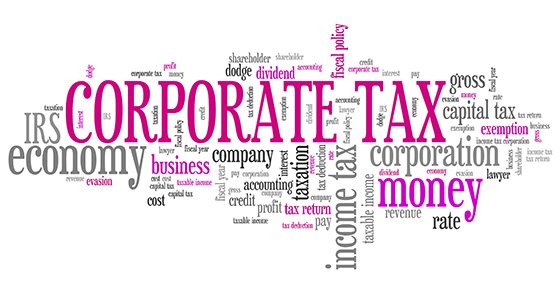C Corporation Advantages and Disadvantages
 The flat 21% federal income tax rate for C corporations under the Tax Cuts and Jobs Act (TCJA) has been great news for these entities and their owners. But there are some key C Corporation advantages and disadvantages you need to be aware of.
The flat 21% federal income tax rate for C corporations under the Tax Cuts and Jobs Act (TCJA) has been great news for these entities and their owners. But there are some key C Corporation advantages and disadvantages you need to be aware of.
C-Corporations are Subject to Double Taxation
Double taxation occurs by taxing corporate income once at the corporate level and again at the shareholder level as dividends are paid out. The cost of double taxation, however, is now generally less because of the 21% corporate rate.
And double taxation isn’t a problem when a C corporation needs to retain all its earnings to finance growth and capital investments. Because all the earnings stay “inside” the corporation, no dividends are paid to shareholders, and, therefore, there’s no double taxation.
Double taxation also isn’t an issue when a C corporation’s taxable income levels are low. You can often achieve this by paying reasonable salaries and shareholder employee bonuses. In addition, you can also provide them with tax-favored fringe benefits which are deductible by the corporation and tax-free to the recipient shareholder-employees.
When C-Corporation Status Isn’t Generally Advisable: Appreciating Assets
Generally, we suggest not to use the C Corp status for ventures with appreciating assets or certain depreciable assets. This is because if assets, such as real estate, are eventually sold for substantial gains, it may be impossible to extract the profits from the corporation without being subject to double taxation. In contrast, if appreciating assets are held by a pass-through entity (such as an S corporation, partnership or limited liability company treated as a partnership for tax purposes), gains on such sales will be taxed only once, at the owner level.
But assets held by a C Corporation don’t necessarily have to appreciate in value for double taxation to occur. Depreciation lowers the tax basis of the property. In turn, a taxable gain will result whenever the sale price exceeds the depreciated basis. In effect, appreciation can result by depreciation when depreciable assets hold their value.
To avoid this double-taxation issue, you might consider using a pass-through entity. Doing so will allow you to lease your C corporation’s appreciating assets or depreciable assets that will hold their value.
C Corporation Advantages and Disadvantages: Ongoing Tax Losses
C Corporation status is also not an advisable choice of business entity for ventures that will incur ongoing tax losses. When a venture is set up as a C corporation, losses do not pass through to the owners (shareholders). A tax loss strategy like this would only apply to a pass-through entity. Instead, they create corporate net operating losses (NOLs). An NOL can carry over to future tax years and then offset any corporate taxable income.
This is already a potential downside of C corporations; taking several years for a start-up to be profitable. Now, under the TCJA, NOLs that arise in tax years beginning after 2017 can’t offset more than 80% of taxable income in the NOL carryover year. So it may take even longer to fully absorb tax losses.
Do you have questions about C corporation advantages and disadvantages post-TCJA? Contact our accounting firm.
